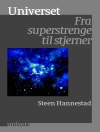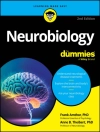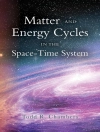Einstein’s general theory of relativity has transformed how we perceive space-time and its interplay with matter. This second edition presents a modern, compact and digestible account of modern cosmology and general relativity. With updated and expanded chapters, topics covered include equivalence principles, space-time curvature, Einstein’s theory, tests of GR, black hole theory, gravitational waves, the Cosmic Microwave Background (CMB), the large-scale structure of the Universe, and quantum gravity. Each chapter contains a set of exercises to consolidate the material and other challenges for students. Fully worked solutions are provided, accessible only by instructors. This comprehensive book caters for third and fourth year undergraduates reading for degrees in physics, astrophysics, and related degree programmes, and is useful as a reference for postgraduates.
Key Features
- Provides a fully integrated treatment of general relativity and cosmology
- Gives a physical treatment of GR with the essential minimal mathematics
- Contains up-to-date observations of gravitational waves by LIGO and Virgo
- Gives a clear account of the development of the universe with the simple physical basis explained and numerical predictions presented to support this
- Solutions manual available to instructors. Contact [email protected].
Table of Content
Preface
Acknowledgments
About the Author
Physical Constants and Parameters
1 Introduction
2 The Equivalence Principle
3 Space and Spacetime Curvature
4 Elementary Tensor Analysis
5 Einstein’s Theory I
6 Einstein’s Theory II
7 Tests of General Relativity
8 Black Holes
9 The Discovery and Study of Gravitational Waves
10 Cosmic Dynamics
11 Distances, Horizons and Measurements
12 Cosmic Microwave Background
13 Inflation in the Early Universe
14 Big Bang Nucleosynthesis
15 Structure Origins
16 Baryonic Structures
17 The Dark Sector
Appendix A: The Particles and Forces
Appendix B: Variational Methods
Appendix C: The Schwarzschild Metric
Appendix D: Energy Flow in Gravitational Waves
Appendix E: Radiation from a Nearly Newtonian Source
Appendix F: The Friedmann Equations
Appendix G: The Virial Theorem
Appendix H: Scale Invariance
About the author
Ian R Kenyon was Hon Professor in the School of Physics and Astronomy, University of Birmingham. He was a particle physics experimentalist with experience of R+D in optoelectronics for LHC. He was a member of the UA1 collaboration from its inception; was attached at CERN for three years and took part in the design, construction, data-taking and analysis that led to the discovery of the W- and Z-bosons, Beauty mixing and the gluon spin. Previous publications are: ‘Elementary Particle Physics’ for the then Routledge-Kegan-Paul; ‘General Relativity’ for OUP; ‘The Light Fantastic: A Modern Introduction to Classical and Quantum Optics’ for OUP; and ‘Quantum 20/20: Fundamentals, Entanglement, Gauge Fields, Condensates and Topology’ for OUP in 2020.












